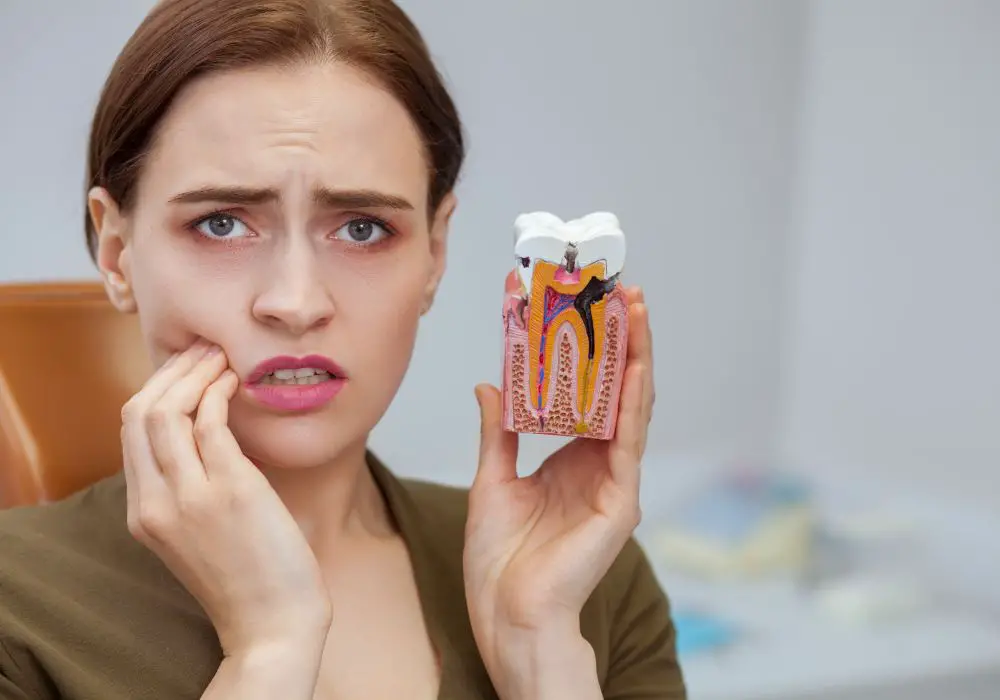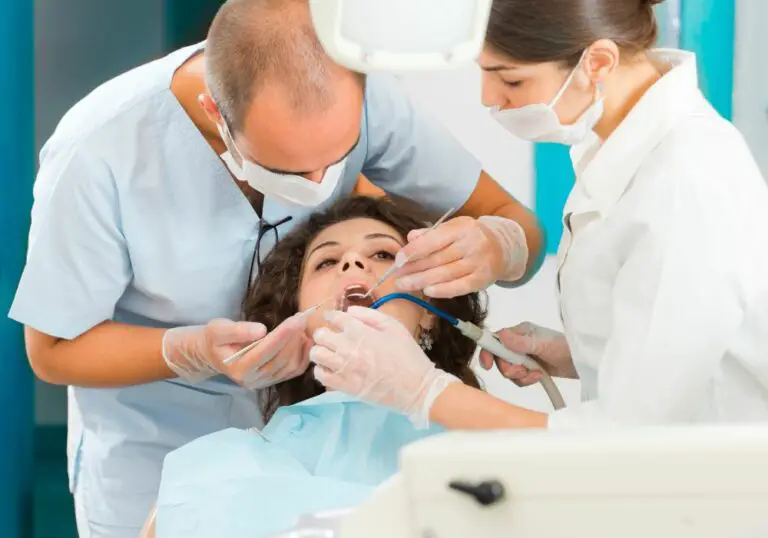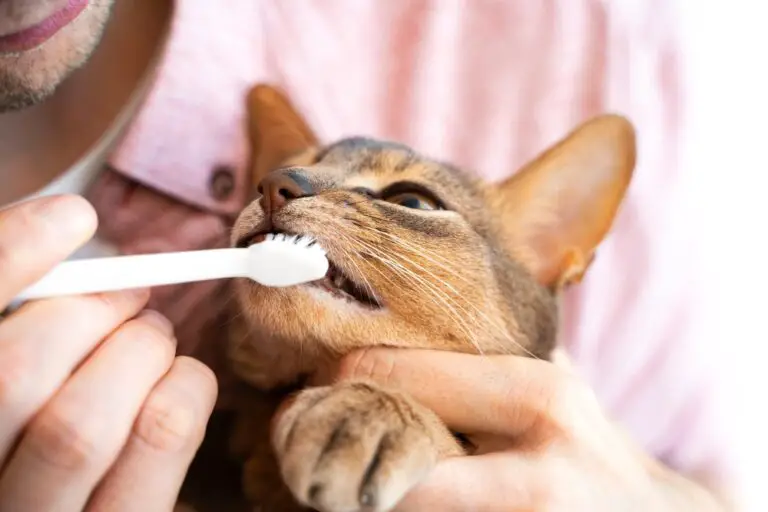Tooth and gum damage can occur for many reasons, including poor oral hygiene, genetics, illness, injury, and age. The good news is that in many cases, it is possible to reverse or at least stop the progression of gum disease and tooth decay. With proper oral care and treatment, you can restore your oral health.
What causes tooth and gum damage?

There are several key factors that contribute to tooth and gum damage:
Plaque buildup
Plaque is a sticky, colorless film of bacteria that constantly forms on the teeth. When plaque is not removed by brushing and flossing, it hardens into tartar that coats the teeth. The acids produced by plaque bacteria erode the enamel surface of teeth, creating tiny holes that grow into cavities. Plaque that extends below the gumline causes inflammation and infection of the gums known as gingivitis.
Poor nutrition
A diet high in refined carbohydrates and sugary foods leads to higher acid levels in the mouth that demineralize tooth enamel. Deficiencies in important vitamins and minerals like vitamin D, calcium, and phosphorous also negatively impact tooth mineralization. Eating a balanced diet low in sugar with plenty of tooth-strengthening nutrients is vital for good oral health.
Medications
Hundreds of medications reduce saliva flow, including decongestants, antihistamines, painkillers, diuretics, antidepressants, and high blood pressure medications. Saliva helps neutralize damaging acids in the mouth and washes away food particles. Less saliva means teeth have less protection from decay.
Grinding and clenching
Chronic grinding or clenching of the teeth wears down enamel and chips teeth. It also causes excessive force to be exerted on teeth and bone, leading to loose teeth, receding gums, and shifting of teeth. Night guards should be worn to prevent this damage during sleep.
Genetics
Some people are simply more prone to cavities, gum recession, and periodontal disease due to inherited traits like the shape of teeth, thickness of enamel, and gum recession. Heredity plays a major role in oral health.
Illnesses
Chronic diseases like diabetes and cancer, as well as conditions like bulimia that involve frequent vomiting, drastically increase the risk of oral health problems. Medications used to treat illness can reduce saliva flow. High glucose levels in saliva increase the risk of infection.
Smoking and tobacco use
Smoking cigarettes or using other tobacco products introduces thousands of toxins into the mouth, damaging gum tissue and increasing plaque. It reduces blood flow, slowing the body’s natural healing process. Tobacco use of any kind substantially raises the risk of gum disease and oral cancer.
Stress
When stress hormone levels are high for long periods, the body’s immune response is suppressed. This makes gums more susceptible to the bacteria that cause infection and disease. People under high stress may also neglect proper oral hygiene.
Aging
As we age, the mouth produces less saliva to wash away bacteria, food, and debris. Gums recede, exposing sensitive root surfaces prone to decay. A lifetime of plaque buildup, abrasion, and habits like teeth grinding also increase the risk of oral health problems. Proper home care and regular dental visits become even more essential.
Signs of tooth and gum damage
Be on the lookout for these common signs of tooth decay and gum disease:
- Tooth sensitivity to hot, cold, sweet foods and drinks
- Toothache or throbbing pain in teeth
- Cavities – holes in teeth from decay
- Chipped, cracked or worn teeth with rough edges
- Loose permanent teeth
- Receding, red, sore, or swollen gums
- Bleeding when brushing or flossing
- Persistent bad breath
- Puffy or inflamed gums
- Gums that have pulled away from the teeth
- Shifting or changing alignment of teeth
- Pus around teeth and gums
- Loose or ill-fitting partial dentures
- Changes in bite alignment
- Staining or discoloration of teeth
Don’t ignore symptoms. Report them to your dentist immediately to discover the underlying cause. Early detection maximizes the chances of reversing the damage.
Stages of gum disease

Gum disease is progressive, worsening over time without treatment. It includes these stages:
Gingivitis
Gingivitis is initial gum inflammation with redness, swelling, and bleeding when brushing. There is usually no pain yet, and the teeth are not affected. It is easily reversible at this early stage.
Early periodontitis
As gingivitis worsens due to plaque buildup below the gumline, the infection begins destroying the fibers and bone that support the teeth. Shallow pockets form between the teeth and gums harboring more bacteria.
Moderate periodontitis
The tissues and bone supporting teeth are progressively destroyed, and pockets between teeth and gums deepen. More of the tooth root becomes exposed as gums recede. Teeth may loosen and drift.
Advanced periodontitis
Significant bone loss causes teeth to become very loose. Severe recession occurs, exposing excessive tooth root. Bite alignment changes as teeth shift. Tooth loss is likely without prompt treatment.
The extent of bone loss and recession determines the prognosis. But even advanced gum disease can be halted with professional treatment and improved home care.
Can you reverse the damage?
Reversing gingivitis
Gingivitis is very reversible through professional dental cleaning and greatly improved oral hygiene habits. Removing plaque and tartar allows the gums to heal naturally. Ongoing diligent home care prevents it from returning.
Treating early periodontitis
Though some initial gum tissue and bone loss has occurred, further progression can be stopped through treatment. Deep cleanings below the gumline, antibiotics or antimicrobials, and better home care halt damage.
Halting moderate/advanced periodontitis
The focus shifts to preventing additional bone and tissue destruction. Deep cleanings, gum surgery to reduce pocket depths, antibiotics, and irrigations fight infection. Ongoing periodontal maintenance is needed.
Regenerating lost tissue
Once disease progression is controlled, lost bone and gum tissue can partially regenerate. Bone and gum grafting replaces diseased tissue and stimulates the body’s healing abilities. But tissue restoration is limited.
The earlier treatment begins, the better the outcomes. Procedures combined with daily oral hygiene can stabilize even severe gum disease and decay, giving you a healthy, functional mouth.
Improving your oral hygiene routine
Excellent oral hygiene is the foundation for both reversing existing damage and preventing future problems. Focus on these areas:
- Brush properly using correct toothbrushing technique – at a 45-degree angle, making small circles. Brush twice daily for 2 full minutes each time.
- Floss thoroughly once per day, carefully curving floss around each tooth to remove plaque from the sides. Use clean sections as you move between teeth.
- Clean the tongue – Bacteria and toxins build up on the tongue’s surface. Scraping or brushing the tongue twice a day reduces bacteria.
- Use antimicrobial mouthwash daily to reduce plaque between teeth and help resolve gingivitis. Pick an alcohol-free version if you have oral sensitivity.
- Drink plenty of water to stay hydrated, especially after eating and drinking. This helps neutralize mouth acidity and clears away food particles.
- Reduce sugar and acid intake – Limit sugary or acidic foods that contribute to enamel erosion and decay. Avoid constant snacking.
- See your dentist regularly – Get professional cleanings at least every 6 months. Report any concerns immediately. Early treatment is critical.
Pay close attention to the steps of your home care routine. Consistency and proper technique make a major difference in your oral health.
Professional treatments for gum disease

In addition to daily care, your dentist can provide treatments to halt gum disease and cavities, including:
- Deep cleanings that go beyond standard cleaning by removing hardened tartar above and especially below the gumline that you can’t remove at home. Local anesthesia is used to numb the area being worked on.
- Root planing and scaling which smooths rough spots on tooth roots and cleans plaque and tartar from below the gumline down to the roots. This disrupts bacterial colonies.
- Medications such as prescription antimicrobial mouth rinses to reduce bacteria and anti-inflammatory drugs to lessen gum inflammation and infection.
- Gum surgery referred to as flap surgery can remove damaged gum tissue, reshape contouring of gums, reduce periodontal pockets, and stimulate bone regrowth.
- Bone grafts – Tiny bone fragments are placed in areas of bone loss around teeth to encourage regrowth and stabilization. Materials like donated bone tissue or cow bone are used.
- Soft tissue grafts utilize small bits of donated tissue to cover exposed tooth roots and strengthen areas of receded gums. This protects roots and stimulates gum regrowth.
- Growth factor application – Enamel matrix derivatives or platelet-derived growth factors are proteins applied to gum damage that stimulate cells to regenerate bone, gum tissue, and tooth-supporting fibers.
- Dental implants can replace teeth lost to advanced periodontal disease, anchoring artificial teeth and preventing bone loss in the area.
With a combination of professional treatment and excellent daily cleaning, even advanced gum disease and tooth decay can be stabilized. But treatment must be maintained long-term.
Can receding gums grow back?
Gum recession happens gradually, often without pain or noticeable symptoms. As gums recede further, tooth roots become exposed. This can lead to sensitivity, decay, and a visible “long tooth” appearance.
Mild recession sometimes improves with diligent brushing and flossing if fibrosis hasn’t occurred. But significant recession won’t resolve without professional treatment. Exposed roots require gum grafting for protection.
Several techniques are used:
- Connective tissue graft – Roof of mouth tissue is transplanted to cover exposed root areas. This is a predictable procedure with excellent results.
- Pedicle soft tissue graft – Nearby gum tissue is partially cut, moved over the receded area, and stitched into place.
- Free gingival graft – Grafts from gum tissue elsewhere in the mouth are placed on the exposed root and stitched into place.
- Alloderm graft – This laboratory-grown graft utilizing human cells stimulates growth of new gum tissue to cover exposed roots.
- Pinhole surgical technique – Tiny incisions are made that allow gum tissue to be loosened and shifted down over receded areas. No scalpels or sutures are used.
With any graft, meticulous home care improves success. Full results can take several months as the grafted tissue integrates. But gum grafting procedures have high success rates when done properly.
Tooth decay and cavity reversal
Unlike gum disease, cavities don’t heal on their own. Decay will continue progressing without treatment. But small cavities can sometimes be arrested before reaching an advanced stage.
Remineralization
In the earliest stage of decay, minerals are lost from the enamel surface. Fluoride varnish or calcium-phosphate rinses can replace these minerals, essentially re-hardening the enamel through a process called remineralization.
Silver diamine fluoride
This antimicrobial liquid both stops bacteria and remineralizes small cavities, often stabilizing decay. It turns the decayed area dark temporarily. It is easy to apply painlessly.
Dental fillings
Traditional fillings remove decayed material and fill the hole with composite resin, porcelain, or other restoration materials to prevent the cavity from growing.
Larger cavities into the inner pulp require root canals or dental crowns to save the tooth. But early-stage decay can absolutely be stopped and reversed using conservative treatments. Detecting it early is key.
Improving dental habits for oral health
Daily care and professional cleanings form a foundation for oral health. But comprehensive lifestyle and diet changes make a dramatic difference:
Quit smoking and tobacco use – This is the single most beneficial thing you can do for the health of your gums, teeth and mouth. The toxins severely exacerbate gum disease and oral cancer risk.
Manage health conditions – Work closely with your medical providers to keep diabetes, cancer, eating disorders, and other conditions under control through medication, diet and exercise. This alleviates complications.
Reduce stress – Find healthy stress relief outlets like exercise, meditation, counseling, or massage therapy. Long-term chronic stress increases inflammation, suppresses the immune system, and is linked to gum disease.
Eat less sugar – Limit sugary or acidic foods and beverages that contribute to erosion and decay. Save sweets for occasional treats.
Drink plenty of water – Stay well hydrated, especially after consuming food and drinks. Water neutralizes acid, rinses away particles, and prevents a dry mouth.
Pick healthy snacks – Reach for fruits, vegetables, cheese, plain yogurt, nuts and other tooth-friendly choices. Avoid constant snacking day and night.
Take key supplements – Vitamin C, probiotics, Coenzyme Q10, calcium, and vitamin D all help maintain healthy gums and strong enamel. Ask your dentist for suggestions.
Use antibacterial products – Oral rinses, toothpastes, and gels containing tea tree oil, cetylpyridinium chloride or triclosan fight plaque.
See your dentist regularly – Have dental cleanings and exams every 6 months. Report any oral changes or symptoms. Follow your dentist’s recommendations.
Reversing gum recession and tooth decay requires diligence and patience. But implementing healthy daily habits, hygiene, treatments and lifestyle changes can dramatically improve your oral health and smile!
Frequently Asked Questions
Here are answers to some common questions about reversing tooth and gum damage:
Can receding gums grow back naturally?
In very mild cases of gum recession, diligent brushing and flossing can help gums reattach naturally. But any significant level of recession requires professional grafting procedures for the exposed root to be covered again.
How long does it take to reverse gum disease?
With consistent professional treatment and excellent daily oral hygiene, gingivitis can resolve in a few weeks. Moderate gum disease usually stabilizes within 1-3 months. Severe damage may take longer to halt depending on factors like smoking and medical conditions.
Can cavities be reversed without fillings?
Small cavities limited to the enamel surface can sometimes remineralize using fluoride if caught very early. But once decay penetrates deeper layers, a traditional filling or other restoration is needed to stabilize it before reaching the pulp.
What foods help gum disease?
A diet rich in vitamins C, D, and Coenzyme Q10, green tea, fruits, vegetables, nuts, seeds, yogurt, and high-fiber whole grains provides nutrients that support gum health. Limit sugar and drink plenty of water.
How much does it cost to fix receding gums?
Most gum grafting procedures range from $600 – $2200 per tooth depending on the type needed. Pinhole surgical treatment averages $500-$1500 per tooth. Dental insurance may cover a portion if the recession meets coverage requirements.






